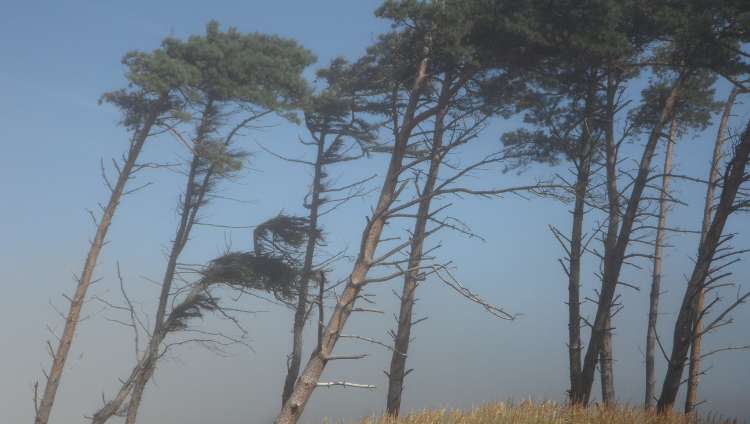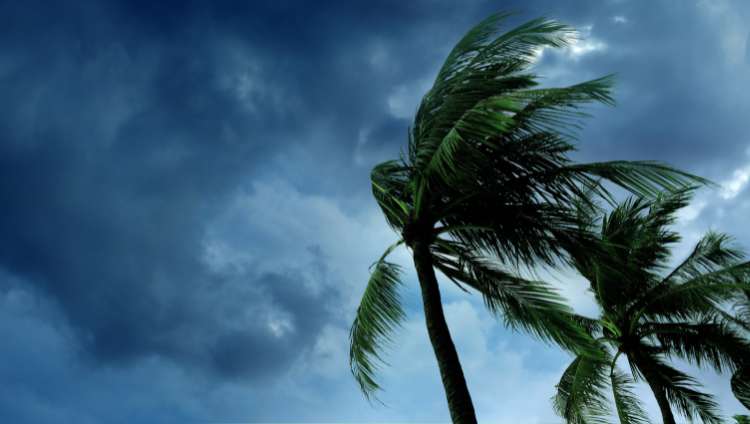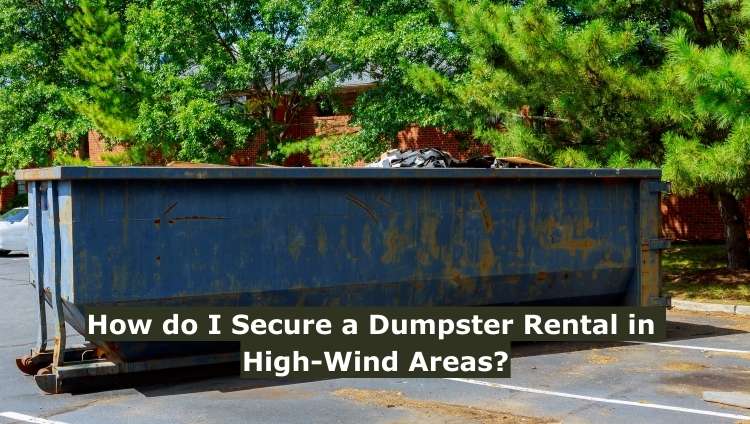Securing a dumpster rental in high-wind areas is a critical task that often gets overlooked, yet it plays a significant role in protecting property and ensuring safety during severe weather conditions.
High winds can turn an unsecured dumpster into a dangerous projectile, causing extensive damage and posing serious risks to people and structures nearby.
Whether you’re dealing with a construction site, a renovation project, or routine waste management, understanding how to properly secure your dumpster can make all the difference.
This comprehensive guide will walk you through the best practices and detailed steps for anchoring and safeguarding your dumpster rental against the challenges of high winds.
By following these recommendations, you can minimize potential hazards, maintain operational efficiency, and uphold safety standards in any high-wind scenario.
Choosing the Right Location
Elevation and Open Space: Choose a location on higher ground to prevent flooding. Ensure the area is unobstructed and open to reduce wind resistance and the risk of debris impacting the dumpster.
Avoiding Obstacles: Position the dumpster away from trees, power lines, and buildings. Falling branches or collapsing structures during strong winds could cause substantial damage. Additionally, keep it clear of areas with frequent vehicle or heavy machinery activity to avoid accidental collisions.
Wind Direction: Take into account the prevailing wind direction. Place the dumpster so that its shortest side faces into the wind to minimize exposure and reduce wind resistance.

Securing the Dumpster
Heavy-Duty Anchors: Use industrial-grade chains, cables, or straps to anchor the dumpster securely. Attach these to immovable structures like buildings or heavy equipment. Ensure the anchors are robust enough to withstand high wind pressures and are installed tightly to prevent any slack.
Additional Weight: Adding weight inside the dumpster can enhance stability. Partially fill it with heavy materials such as concrete blocks, sandbags, or construction debris. Distribute the weight evenly to avoid tipping.
Lid Security: If the dumpster has a lid, ensure it is closed and securely locked. Use additional latches or clamps if necessary to prevent the lid from being blown open. This helps prevent debris from escaping and rainwater from entering.
Windbreaks: If possible, create windbreaks around the dumpster using temporary barriers like heavy-duty tarps, fencing, or plywood sheets. These barriers can help deflect wind and reduce direct pressure on the dumpster.
Learn more about proper dumpster usage in our article on Waste Management Dumpster Rules.
Preparation During High-Wind Events
Weather Monitoring: Keep a close eye on local weather forecasts and alerts. Utilize weather apps, radio updates, and emergency notifications to stay informed about incoming high winds or severe weather conditions.
Regular Inspections: Conduct frequent inspections of the dumpster and its anchors, especially when high winds are expected. Check for any signs of wear, damage, or loosened anchors, and address any issues immediately.
Clear Surrounding Area: Remove loose items and debris around the dumpster that could become projectiles in high winds. Ensure the area is clear to prevent additional hazards.

Emergency Procedures
Emergency Contacts: Maintain a list of emergency contacts, including your dumpster rental provider, local emergency services, and utility companies. This ensures you can quickly report issues and receive assistance if needed.
Evacuation Plan: Develop an evacuation plan for severe weather events. Familiarize all personnel with the plan, including evacuation routes and designated safe areas. Conduct regular drills to ensure everyone knows the procedures.
Safety Gear: Equip your team with appropriate safety gear such as helmets, gloves, and safety goggles to protect them during inspections and adjustments around the dumpster.
For more information, read How to Handle Hazardous Materials When Renting a Dumpster.
Post-Storm Assessment
Damage Inspection: After the storm, perform a thorough inspection of the dumpster. Look for dents, cracks, or other signs of damage. Check the anchors and ensure they are still secure.
Clearing Debris: Remove any debris that has accumulated around the dumpster. This ensures safe access and prevents potential hazards during normal operations.
Report Damage: Immediately report any damage to your rental company. They can provide guidance on necessary repairs or replacements to ensure continued safety and functionality.

Long-Term Strategies
Routine Maintenance: Regularly maintain and inspect your dumpster and its anchoring system. This includes checking for rust, wear, and tear, and replacing any worn-out components.
Training: Train your team on proper procedures for securing dumpsters in high-wind areas. Ensure they understand the importance of these measures and know how to implement them effectively.
Improved Infrastructure: If high winds are a common issue, consider investing in more permanent solutions, such as wind-resistant dumpster designs or dedicated enclosures that provide added protection.
By implementing these detailed steps and safety measures, you can effectively secure a dumpster rental in high-wind areas, reducing the risk of damage and ensuring the safety of both property and personnel.
Always prioritize proactive measures and preparedness to mitigate potential risks during severe weather events.
See our article on Training for Proper Waste Disposal Practices for more details.
Frequently Asked Question
Why is it important to secure a dumpster rental in high-wind areas?
Securing a dumpster rental in high-wind areas is crucial to prevent it from tipping over or becoming a projectile during severe weather. This helps protect nearby property and ensures the safety of people around the area.
What kind of anchors should I use to secure a dumpster?
Heavy-duty chains, cables, or straps are recommended for anchoring dumpsters. These should be attached to solid, immovable structures like buildings or heavy equipment to withstand strong wind pressures.
Can adding weight to the dumpster help with stability?
Yes, adding weight inside the dumpster can significantly enhance its stability. Filling it partially with heavy materials like concrete blocks, sandbags, or construction debris can prevent it from being easily moved by wind.
How often should I inspect the dumpster and its anchors?
Regular inspections are essential, especially when high winds are forecasted. Check the dumpster and its anchors for signs of wear, damage, or loosening. It’s best to inspect before and after storms, as well as periodically during extended periods of high winds.
What should I do if my dumpster gets damaged during a storm?
If your dumpster is damaged during a storm, report it to your rental company immediately. They can provide guidance on necessary repairs or replacements to ensure continued safety and functionality.
Are there specific locations to avoid when placing a dumpster in a high-wind area?
Avoid placing the dumpster near trees, power lines, or buildings. Also, steer clear of low-lying areas prone to flooding. Positioning the dumpster with its shortest side facing the prevailing wind direction can reduce wind resistance.
Conclusion
Ensuring a dumpster rental is secure in high-wind areas is crucial for maintaining safety and preventing potential damage.
Selecting an appropriate location, utilizing sturdy anchoring methods, and conducting regular inspections and maintenance are effective ways to minimize risks during severe weather.
Additionally, developing a detailed emergency plan and keeping informed about weather updates can further enhance safety. By following these strategies, you can protect your property and those around you, ensuring seamless operations even in windy conditions. Stay prepared, proactive, and safe!


